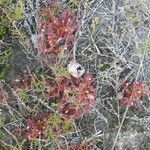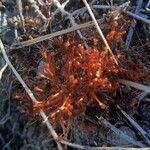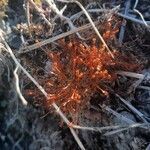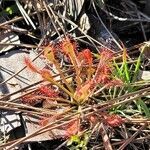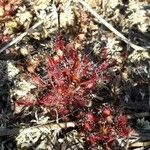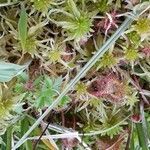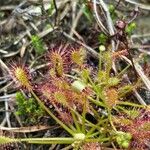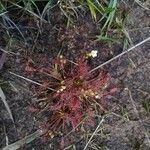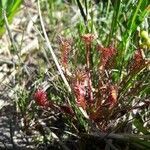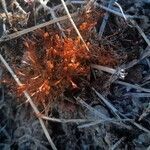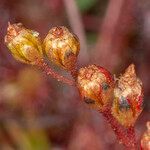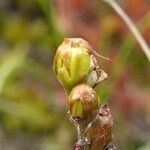Stem 1–8 cm, with lvs in a rosette or also at intervals for several cm; petioles 2–5 cm, glabrous; lf-blades oblong-spatulate to obovate, 8–20 cm × 4–5 mm, with long glandular hairs on the upper side; stipules adnate for 1 mm, then breaking into several setaceous segments 2–5 mm; sep 3–4 mm; pet 4–5 mm, white; seeds reddish-brown, oblong, 0.7–1 mm, blunt at the ends, densely and irregularly covered with long papillae; 2n=20. In wet places and shallow water; interruptedly circumboreal, in Amer. from Nf. to Fla., w. to Minn., Ill., Tenn., and Tex. July, Aug. (D. longifolia, in part) Hybridizes with no. 2 [Drosera rotundifolia L.].
Plants forming winter hibernaculae, rosettes 3–6 cm diam. in young plants only; stem base not bulbous-cormose; stem 1–8(–20) cm (other species do not have distinct stem). Leaves erect to spreading, becoming widely separated outward at base before growing upwards>; scapes (2–)5–20(–25) cm, glabrous. Flowers 7–12 mm diam.; sepals connate basally, oblong, 5–6 × 1–1.5 mm, glabrous; petals white, sometimes pink-tinged, obovate, 3–6 × 3–5 mm, <apical margins erose>. Capsules 4–5 mm. Seeds reddish brown, oblong-obovoid, 0.7–1 mm, densely, uniformly papillose. 2n = 20.
